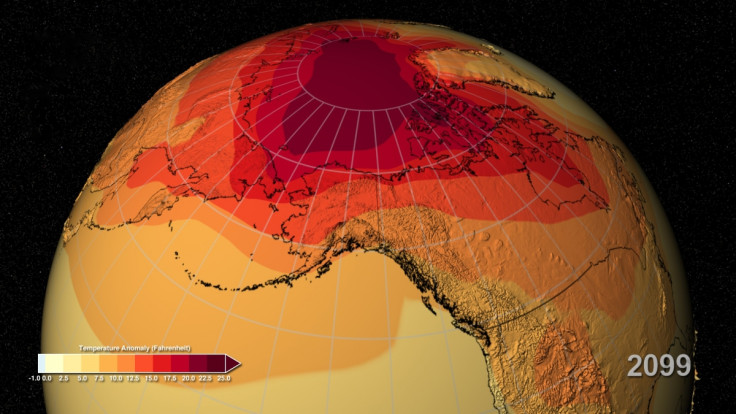Global warming: Average carbon emissions breach 400 ppm mark to enter 'danger zone'

Global average concentration of carbon dioxide in the atmosphere have hit new records after crossing 400 parts per million this March, according to scientists at the US National Oceanic and Atmospheric Administration (NOAA).
The UN Framework Convention on Climate Change has in the past referred to crossing the 400 ppm CO2 level as entering "a new danger zone".
The UN had predicted crossing the 400 mark threshold in 2015 or 2016 but the latest March figures indicate the planet is on a fast track.
"It was only a matter of time that we would average 400 parts per million globally," said Pieter Tans, lead scientist of NOAA's Global Greenhouse Gas Reference Network. "We first reported 400 ppm when all of our Arctic sites reached that value in the spring of 2012. In 2013 the record at NOAA's Mauna Loa Observatory first crossed the 400 ppm threshold. Reaching 400 parts per million as a global average is a significant milestone."
The figure represents a rise of more than 120 parts per million since pre-industrial times, with a major part occurring since 1980, he said.
NOAA data shows that the average growth rate of carbon dioxide concentration in the atmosphere from 2012 to 2014 was 2.25 ppm per year, the highest for three consecutive years.
NOAA observations are based on air samples taken from 40 global sites, including some remote locations.
The global average will remain above 400 ppm through May, the time of year when global carbon dioxide concentrations peak due to natural cycles including decaying of plant and animal matter and a stagnant period of plant growth when carbon intake is low.
Too less too late
The March emissions call attention to the fact that global warming remains largely unaddressed and reinforces the need for nations to come up with more than lip service when it comes to pledges on reductions.
Just a few days ago, the analysis by the Grantham Research Institute and the Centre for Climate Change Economics and Policy at the London School of Economics found serious shortcomings in the Intended Nationally Determined Contributions made by the US, Europe and China regarding their future annual emissions.
The UNEP gives a 50 to 66% chance of staying within 2C if annual worldwide emissions stabilise between 32bn and 44bn tonnes by 2030.
Global emissions in 2010 were already around 47bnt.
The Grantham report found that the European Union, the United States and China together are proposing annual emissions of between 20.9bn and 22.3bn tonnes by 2030.
This leaves about annual 23bn tonnes for the rest of the world for the period. But going by trends, their emissions are expected to rise to about 35bn tonnes by 2030.
The combined total for the world's emission by 2030 is 57bn tonnes, leaving a gap of at least 13bn tonnes between what is pledged and what is needed.
The US has ramped up the rate of emissions reductions from an earlier 17% by 2020 to 28% by 2025 while the EU has pledged to cut carbon emissions by 40% of 1990 levels by 2030.
China, the top carbon emitter, and India at a close third position, are yet to commit on their climate strategies. China has said its carbon emissions will peak around 2030, leaving much room for emissions depending on what the peak will be.
India has refused to announce a peaking year, citing growth imperatives.
Carbon story so far
Human-induced global warming had turned 2014 to the hottest year on record and climate scientists expect 2015 to be no different.
Carbon dioxide concentration levels in the atmosphere have raced from 280 parts per million in 1800 to 290 parts per million in 1900 and crossed the 400 mark this century.
Net global emissions of carbon must drop 40-70% by 2050, hitting zero by the end of the century, the IPCC has said, in order to avoid a temperature rise beyond two degrees – seen as the threshold for irreversible climate change.
Research conducted by the Global Carbon Project has shown that the means to a two degree limit are slipping away fast. Their claim has been supported by teams at the University of California and the Scripps Institution of Oceanography.
Even a 2C warming comes with a potential for damage, said a recent study showing that it can spur five times as many hot extremes than today, and two times as many hot extremes as with a 1.5C warming.
A recent commentary report from the IPCC argued for limiting temperature rise to 1.5 deg C saying that a two degree rise was more than what can be tolerated by marine ecosystems and marginalised human populations.
With carbon dioxide having a 100 year long staying power, even a total cut in emissions when too late would commit the planet to irreversible climate change for thousands of years.
© Copyright IBTimes 2025. All rights reserved.





















